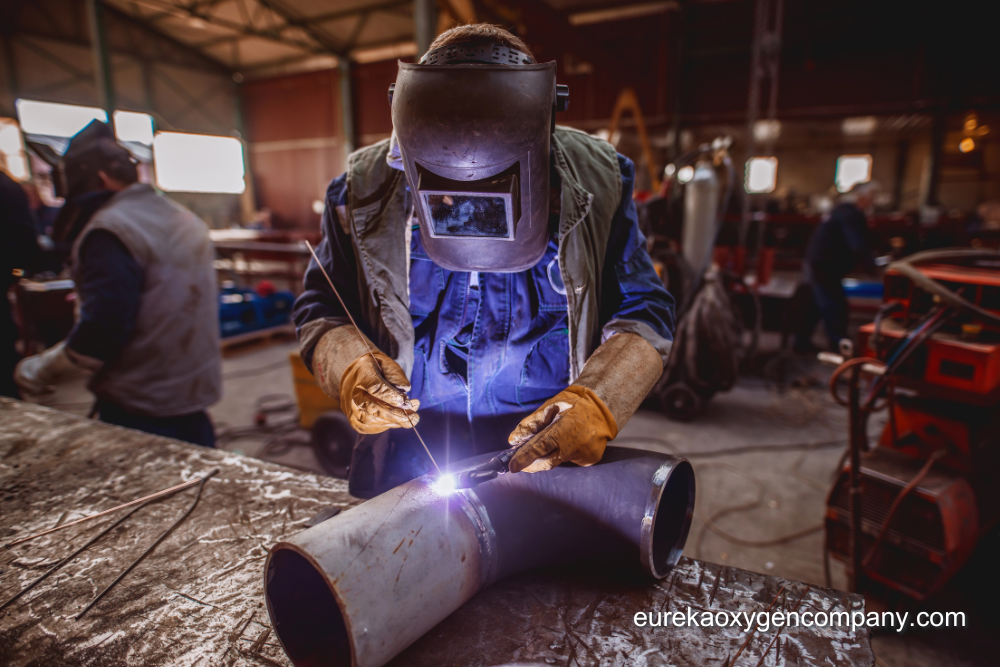Preparing your welding equipment for colder temperatures is essential to maintaining performance, reducing wear, and enhancing safety. Freezing temperatures can cause equipment to malfunction, gas flow rates to drop, and metals to behave differently, which can compromise weld quality and increase risks. Let’s review the best equipment winterization tips to help you prepare your workspace for the cold season ahead.
1. Inspect Your Equipment Thoroughly
Winter weather can be harsh on welding machines and other equipment, such as hoses and regulators. Therefore, the first step to preparing them for the season is checking for signs of wear or damage. Cold can make rubber and plastic stiff and prone to cracking, so cold-weather equipment prep is critical for preventing breakdowns.
Check hoses for cracks, regulators for leaks, and connections to ensure they’re secure. Address all issues now to avoid malfunctions mid-project.

2. Adjust Gas Flow and Pressure Settings
Gas flow rates can fluctuate in cold weather due to temperature changes affecting gas pressure. Adjust your equipment to maintain steady flow rates in lower temperatures to prevent inconsistencies. Gases like oxygen and acetylene, for example, are sensitive to temperature, so be sure to plan for changes in gas density in case they impact your flame stability and weld quality.
We recommend you work closely with your industrial gas supplier to determine the ideal pressure settings for colder temperatures.
3. Protect Cylinders from Freezing Temperatures
Cold temperatures can lower the pressure inside gas cylinders, making them difficult to use. The ideal scenario would be to store your cylinders in a temperature-controlled space. Still, if this isn’t an option for your facility, you can use insulated covers to protect them from freezing. This will also keep the gases at a more consistent pressure and ensure better performance for your winter welding projects.
Keep all storage areas dry and free of ice. Frozen valves and connections can be a safety hazard, so include these areas in your cold-weather equipment prep checklist.

4. Ensure Fire Suppression Equipment is Winter-Ready
Welding always requires caution, and winter weather is no exception. Ensure all fire suppression equipment and services are winter-ready; the cold can affect the performance of extinguishers and other safety tools.
Keep fire blankets, extinguishers, and other suppression tools easily accessible in case of emergencies, and put up signs to help personnel find them.
5. Prevent Condensation and Moisture Build-Up
When temperatures fluctuate, condensation is very common, and it can lead to equipment rust, electrical shorts, and contamination in gas systems. Moisture build-up can also affect weld quality and compromise equipment durability. To reduce the risk, keep your equipment and storage areas dry.
Storing equipment indoors or using covers on critical parts helps reduce condensation, ensuring your welding supply and equipment stay in optimal condition and last a very long time.
6. Preheat Metals for Consistent Welds
Cold metal can be more brittle, increasing the risk of cracks, breaks, and incomplete welds. Preheating metals before welding is an effective way to improve weld consistency and strength in low temperatures. Preheating can reduce thermal shock and ensure smoother, more uniform welds.
Incorporate preheating into your cold-weather equipment prep routine, especially if working with thicker or high-carbon metals in temperatures below freezing.

Contact Eureka Oxygen
Winter welding can be challenging, but with proper preparation, you can maintain both safety and quality. Applying these recommendations and taking the necessary precautions ensures your welding setup is ready for the winter.
Don’t forget to conduct regular maintenance checks during the season to ensure everything works correctly.
At Eureka Oxygen, you can find a wide selection of welding supplies and equipment, including gas cylinders and personal protective equipment (PPE). We have various locations and delivery areas, from the Golden Gate Bridge to Gold Beach, OR.

